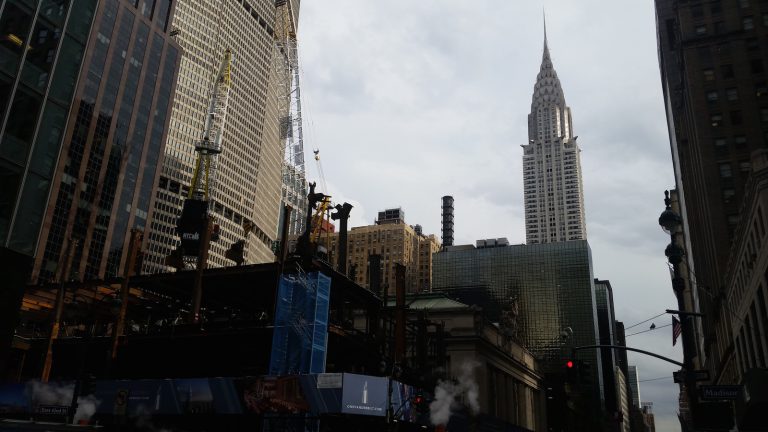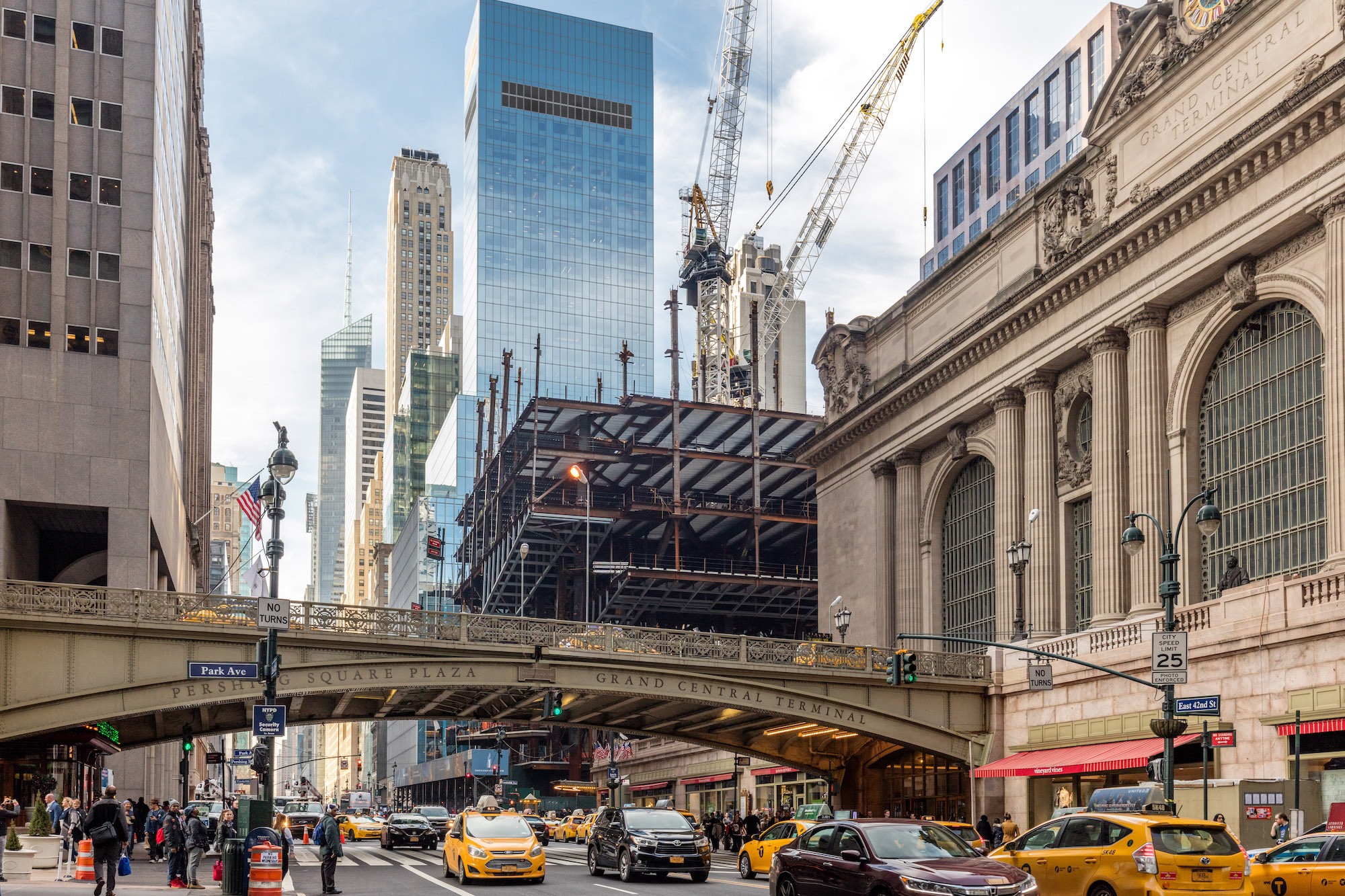



The Prudence Bond & Mortgage Building at Madison and 43rd, where Governor Al Smith once had gubernatorial campaign headquarters, dates to 1923. The 23-story building at 317 Madison Avenue, on the corner with 42nd Street, was designed by Carrère and Hastings and opened in 1922 as the Liggett Building. Some of 51 East 42nd Street's ornate facade details, including terracotta porpoises and cherubs, were saved by the developer and stored until the New York Landmarks Conservancy found a place for them. It had a two-story Modell's store that sold sport-related items. The 18-story Vanderbilt Avenue Building, a Warren and Wetmore-designed structure at 51 East 42nd Street, opened as a six-story office complex in 1902 and expanded in the 1920s. The skyscraper replaced several structures built as part of the Terminal City development around Grand Central in the 20th century. In addition, the Grand Hyatt New York hotel and the Chrysler Building are one block east, while the Pershing Square Building, the Bowery Savings Bank Building, and the Chanin Building are to the southeast. Nearby structures include the Lefcourt Colonial Building and One Grand Central Place to the south Grand Central Terminal to the east and the MetLife Building to the northeast. The building's rectangular land lot covers 44,048 square feet (4,092.2 m 2), with dimensions of 200 by 215 feet (61 by 66 m). The building takes up the city block bounded by Madison Avenue to the west, the former alignment of Vanderbilt Avenue to the east, 42nd Street to the south, and 43rd Street to the north. One Vanderbilt is in the Midtown Manhattan neighborhood of New York City, just west of Grand Central Terminal. 2.3.3 Grand Central subway improvements.Despite delays related to the COVID-19 pandemic, the building opened in September 2020, and Summit One Vanderbilt opened in October 2021. A groundbreaking ceremony for One Vanderbilt was held in October 2016, and the tower topped out on September 17, 2019, two months ahead of schedule. TD Bank signed as the anchor tenant in May 2014 and after the skyscraper was approved one year later, the existing structures on the site were demolished. After a planned zoning amendment for the neighborhood failed in 2013, One Vanderbilt was delayed for several months. SL Green acquired the structures on the site between 20, announcing plans to construct a skyscraper there in 2012. Most of the building is devoted to office space, and the top stories contain an observation deck, Summit One Vanderbilt. The lobby has a bank branch and an entrance to the nearby railroad terminal and the associated subway station, while the second floor contains the Le Pavillon restaurant. The superstructure is made of steel and concrete, and the interior spaces are designed to be as high as 105 feet (32 m). The facade is made mostly of glass panels, while the spandrels between stories are made of terracotta.

The building's base contains a wedge-shaped void, and the tower tapers as it rises, with several "pavilions" and a pinnacle at the top. One Vanderbilt's facade and design is intended to harmonize with Grand Central Terminal immediately to the east. The skyscraper's roof is 1,301 feet (397 m) high and its spire is 1,401 feet (427 m) above ground, making it the city's fourth-tallest building after One World Trade Center, Central Park Tower, and 111 West 57th Street. Designed by Kohn Pedersen Fox, the building was proposed by developer SL Green Realty as part of a planned Midtown East rezoning in the early 2010s. One Vanderbilt is a 93-story supertall skyscraper at the corner of 42nd Street and Vanderbilt Avenue in the Midtown Manhattan neighborhood of New York City. SL Green Realty, National Pension Service of Korea, Hines Interests Limited Partnership


 0 kommentar(er)
0 kommentar(er)
